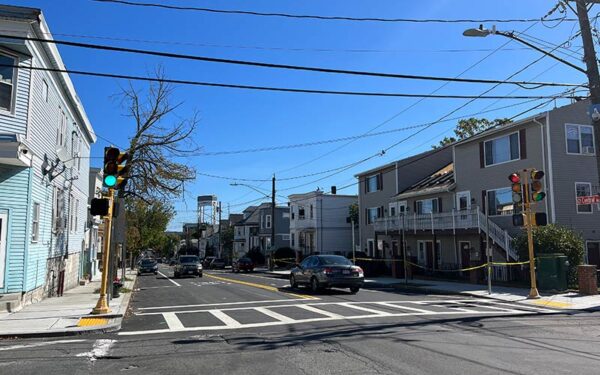
Massachusetts must lower its climate-damaging emissions by 2020. Photo: Happy Stock Photo/Shutterstock
It’s been almost a year since Massachusetts’ highest court found in CLF’s favor in our landmark lawsuit to force the Commonwealth to create new regulations to cut greenhouse gas emissions through the Global Warming Solutions Act (GWSA). The ultimate deadline for the emissions reductions is 2050, by which time the state must slash emissions 80% below 1990 levels. The law sets several benchmarks along the way, however, with the first – to cut emissions 25% by 2020 – now just a few years away.
5 Million Tons by 2020
As we’ve said before (here), in order to comply with the court’s order and meet the 2020 goal, the required new regulations must be designed to cut emissions by about 5 million tons in the next four years. And those reductions must be new, that is, in addition to those already expected from existing programs and policies.
In response, Governor Baker’s Department of Environmental Protection (DEP) has issued draft regulations for public review and comment. But, as is detailed in formal comments and testimony filed by CLF, the proposed regulations fall dramatically short of what’s needed and legally required – adding up to only about 70,000 tons of emissions, not 5 million.
DEP has until August to finalize the new regulations. If DEP ignores CLF’s comments and makes these flawed rules final, then we stand ready to take the agency back to court to ensure it protects our climate and our collective future as the law requires.
The Solution: An Emissions Cap for All Power Plants
But we hope that won’t be necessary, and it need not be. In our filed comments, CLF describes exactly how the proposed regulations must be modified in order to comply with the GWSA and the court’s decision. And we describe an innovative market-based solution that will allow DEP to deliver the carbon reductions the law requires, at least-cost, and without disruption to New England’s electricity grid.
Since the GWSA was passed in 2008, CLF has argued that the law requires the state to cap the emissions of the largest fossil-fired power plants in Massachusetts, imposing annual limits that get smaller every year until they reach zero (or near zero) by 2050. In 2012, we fought for, and successfully developed, a cap that will regulate emissions from the big new natural gas plant in Salem Harbor; and just this year, as a result of more CLF litigation, the state has proposed a similar cap for a new natural gas plant planned for construction in Medway.
But capping individual plants is not enough. The GWSA (as CLF has consistently argued) requires more. To comply with the court’s decision, DEP needs to put a cap on emissions from all large Massachusetts fossil-fuel-fired power plants, dialing their collective emissions down to a level that will guarantee the 5 million ton 2020 reduction the law requires. The tricky part is how to do that while ensuring that the lights stay on and electricity stays affordable. And that’s where CLF’s innovative solution shines.
Let the Market Decide
Rather than cap each plant individually, as it has proposed in its draft regulations, DEP should step back and let the market take over, auctioning emissions rights (as CLF recommends) rather than handing them out to each past polluter. Capping emissions power plant by power plant would almost guarantee that the state’s oldest, least efficient power plants keep polluting over the short term, making it impossible to meet the 2020 emissions goal. CLF’s auction mechanism would ensure that only our most efficient plants stay online (because, when dirty power plants have to account for their pollution in their bottom line, it becomes clear pretty quickly that they can’t compete). And that would make all the difference.
Using CLF’s proposed auction, DEP can not only achieve the emissions reductions the law requires, it can do so while ensuring that we will have all the power we need and get it at low cost. What’s more, this would be the first time a state implemented an in-state emissions auction – a tactic that could set a precedent for other states across the country to lower their own in-state emissions.
But don’t just take our word for it. That’s also what the regional grid operator, ISO-New England (whose job it is to keep the lights on and costs low), says in in its filed comments on the DEP’s proposal: a Massachusetts-only emissions cap will not adversely impact the reliability of our regional electricity system and has the potential – particularly if emissions credits are auctioned as both CLF and ISO-New England recommend – to save us all money once the clean renewable energy sources the state legislature authorized last summer come online.
The Commonwealth has already lost nearly five years in emissions reductions by failing to follow the law and implement new regulations in 2012. Our climate can’t wait any longer.



